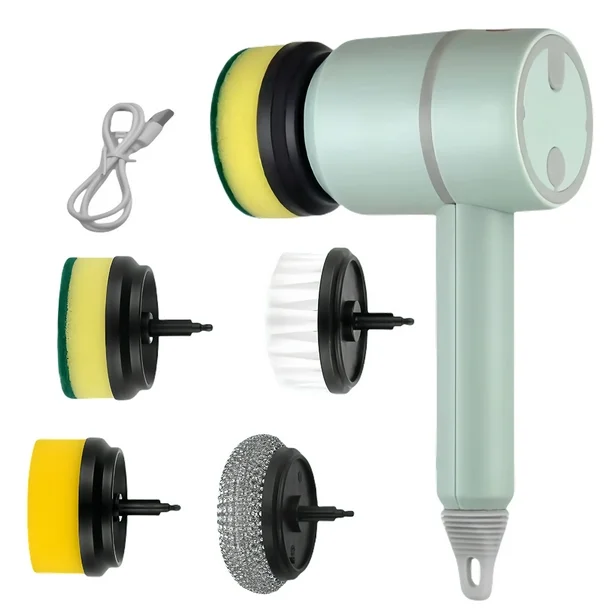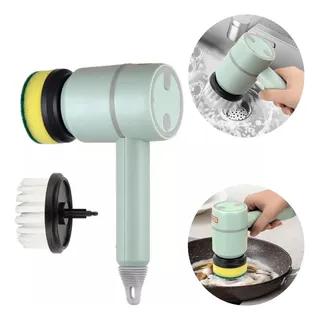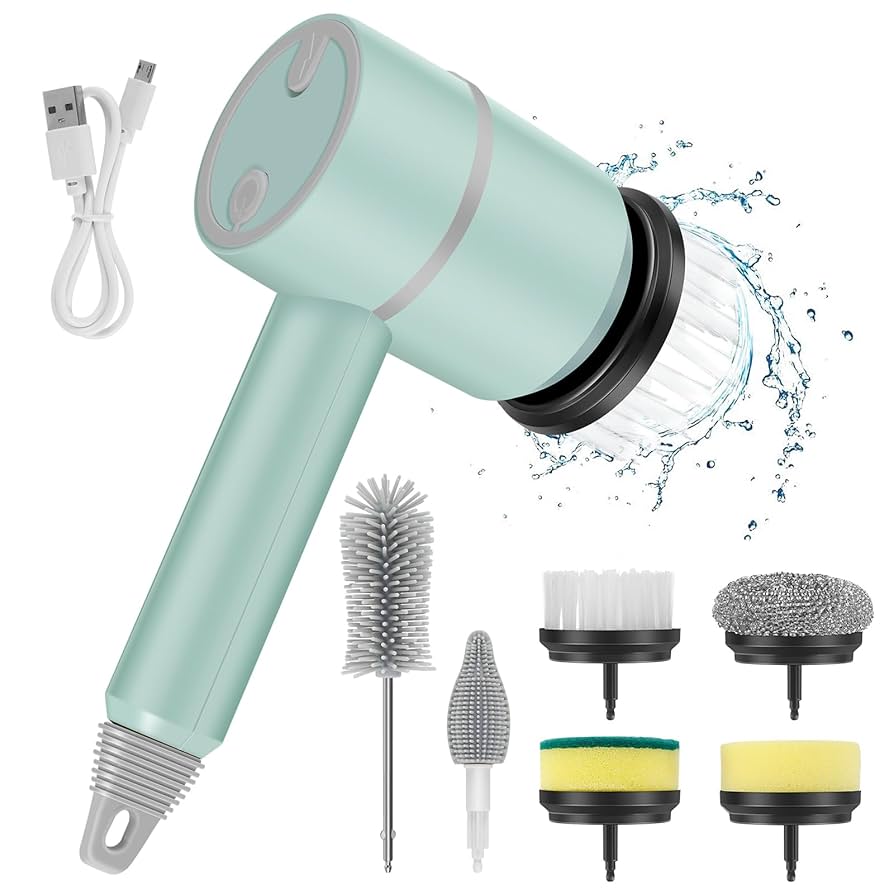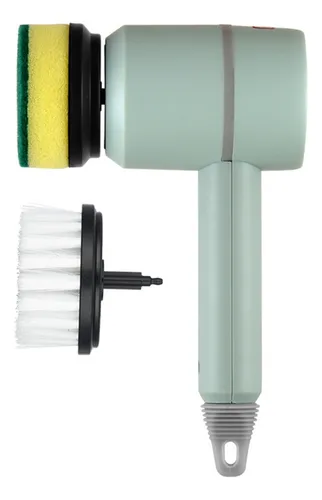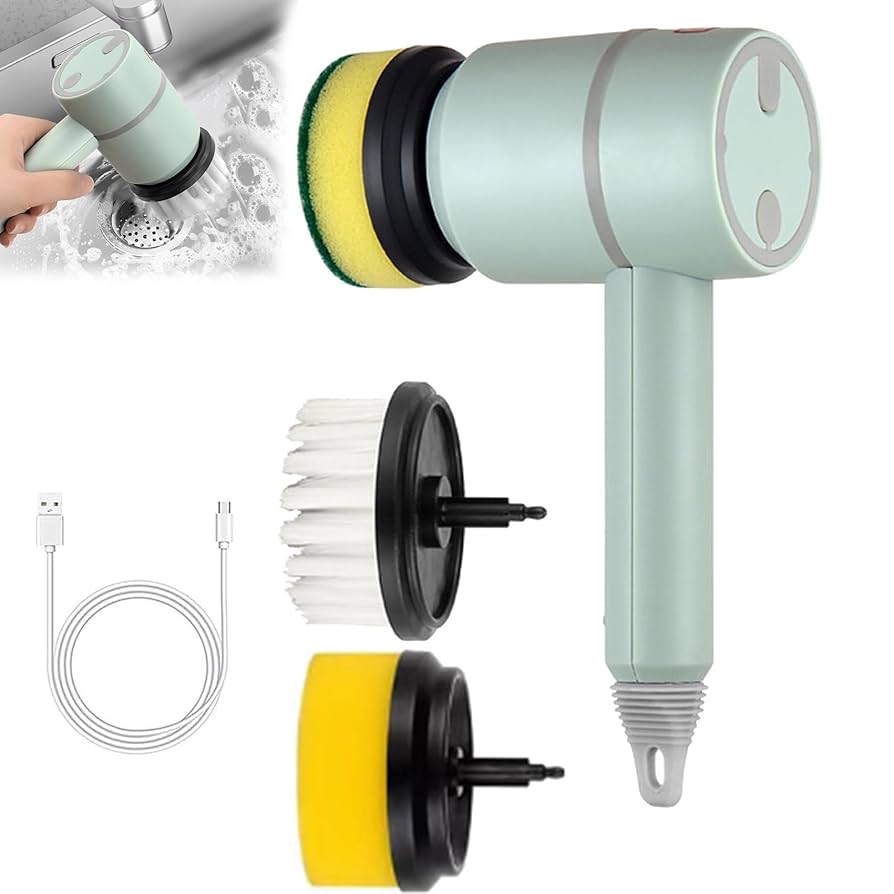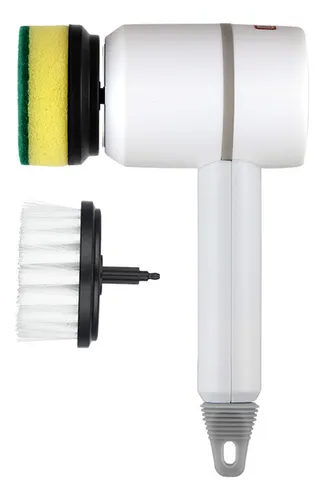Electric Cleaning Brush vs Manual Scrubbing
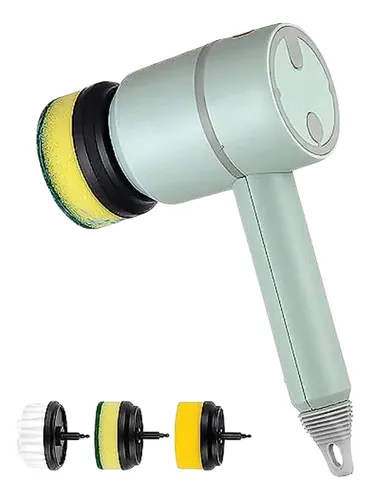
7 Powerful Reasons Why “Electric Cleaning Brush vs Manual Scrubbing” Isn’t Even a Fair Fight
When it comes to cleaning — whether it’s your bathroom tiles, kitchen counters, or car interior — the eternal question always pops up: Should I go for an electric cleaning brush or stick to manual scrubbing?
At first glance, it might seem like just another cleaning debate. But when you actually compare electric cleaning brush vs manual scrubbing, the difference isn’t just about convenience — it’s about time, results, and even your physical energy.
If you’ve ever spent an afternoon scrubbing grout lines or soap scum off a shower wall, you know exactly how tiring (and frustrating) traditional scrubbing can be. But does going electric truly make that much of a difference?
Let’s dive into the real pros, cons, and practical truths behind both methods — and why more people in Malta are switching to electric cleaning brushes for good.
1. The Cleaning Power: How Electric Beats Manual Every Time│Electric Cleaning Brush vs Manual Scrubbing
Let’s start with the most obvious point — cleaning power.
A manual scrub relies entirely on your physical strength, wrist endurance, and technique. The harder you scrub, the better it cleans… in theory. But in reality, your hand simply can’t maintain consistent pressure and speed for long periods.
An electric cleaning brush, on the other hand, uses a motorized rotating head to do the heavy lifting. These devices can spin at several hundred rotations per minute, scrubbing faster and deeper than any human hand could manage.
Imagine you’re trying to clean:
- A shower floor full of soap residue
- Tile grout with mold spots
- A kitchen counter with dried food stains
With manual scrubbing, you’re looking at 15–20 minutes of effort per area. But with an electric cleaning brush, it’s often done in a quarter of the time — and the results are noticeably cleaner.
The high-speed rotation combined with interchangeable brush heads allows the bristles to reach every little corner and uneven surface — something your sponge or brush can’t replicate.
So when we compare electric cleaning brush vs manual scrubbing, it’s not just about how much effort you put in — it’s about the output-to-effort ratio. And electric brushes win this round hands down.
2. Time Efficiency: Your Weekends Just Got Easier│Electric Cleaning Brush vs Manual Scrubbing
Cleaning is one of those tasks that always seems to take longer than planned. You start thinking, “I’ll just wipe down the bathroom,” and suddenly you’ve lost an hour scrubbing grout with a toothbrush.
That’s where the electric cleaning brush shines.
Because of its power and precision, it drastically reduces cleaning time. Most users report finishing the same task in 30–50% less time compared to manual scrubbing.
For busy homeowners in Malta — whether you’re maintaining a rental property, a seaside apartment, or your family home — time saved is time earned.
Here’s a simple breakdown:
| Task | Manual Scrubbing | Electric Cleaning Brush |
|---|---|---|
| Cleaning shower tiles | 25–30 minutes | 10–12 minutes |
| Polishing kitchen sink | 15 minutes | 6 minutes |
| Removing car interior dirt | 20 minutes | 8 minutes |
The difference adds up quickly. Over a month, you could easily save 4–5 hours of cleaning time just by switching tools.
And let’s be honest — we’d all rather spend that time relaxing than scrubbing.
3. Comfort & Ergonomics: Say Goodbye to Sore Arms│Electric Cleaning Brush vs Manual Scrubbing
If you’ve ever woken up with sore shoulders after a cleaning day, this section will hit home.
Manual scrubbing involves constant wrist movement, bending, kneeling, and applying pressure. That repetitive strain doesn’t just cause discomfort — over time, it can lead to joint pain or even minor injuries, especially for those with arthritis or carpal tunnel syndrome.
The electric cleaning brush, however, eliminates almost all of that physical strain.
It’s designed to be ergonomic, lightweight, and easy to hold. You simply guide it along the surface and let the motor do the hard work. Many modern electric brushes even come with extendable handles, allowing you to clean high walls, ceilings, and floors without bending over.
This makes it especially useful for:
- Seniors who want to maintain independence without overexerting themselves
- Busy parents who want faster cleaning
- Anyone who simply hates the physical effort of scrubbing for long periods
So in the battle of electric cleaning brush vs manual scrubbing, comfort is another big win for the electric side.
Cleaning shouldn’t feel like an arm workout — and now, it doesn’t have to.
4. The Results: A Deeper, More Consistent Clean
Let’s talk about results, because at the end of the day, that’s what matters most.
Manual scrubbing can get good results, sure — but it depends heavily on your effort, cleaning solution, and stamina. The longer you scrub, the better it looks. But how often do we actually scrub long enough?
An electric cleaning brush ensures consistency. Every rotation delivers equal pressure, ensuring even cleaning across the entire surface. You don’t miss spots, you don’t leave streaks, and you don’t get tired halfway through.
And because the bristles spin at high speed, they can reach:
- Grout lines
- Corners and crevices
- Curved surfaces like sinks or tubs
You simply can’t get that kind of precision manually without special tools — and a lot of time.
Even stubborn stains like hard water buildup, soap scum, and limescale come off faster with an electric brush. For homes in Malta, where water hardness is common, that’s a huge plus.
So, if you want your surfaces not just “clean,” but professionally clean, an electric brush is your best ally.
5. Durability & Cost Over Time: The Smart Investment
Some people hesitate to buy electric cleaning tools because they assume it’s an unnecessary expense. But let’s look at the bigger picture.
A good-quality electric cleaning brush costs around €40–€80, depending on the model and features. That might sound like more than a manual brush at first — but it’s a one-time investment that can last for years with proper care.
Manual scrubbing tools wear out fast. Sponges tear, bristles flatten, and you end up replacing them regularly. Not to mention, manual cleaning often leads to using more cleaning products, since you need stronger formulas to compensate for weaker scrubbing power.
Over a year, those extra products add up — both in cost and environmental waste.
In contrast, an electric cleaning brush uses less detergent, because the rotation helps loosen grime more effectively. So you save on cleaning products, effort, and replacements.
In Malta’s humid climate, where mold and mineral buildup are frequent, this durability is even more valuable. You’re not just saving money — you’re saving yourself from constant frustration.
So, when comparing electric cleaning brush vs manual scrubbing, the electric option is actually more economical long-term.
Think of it as an upgrade — the same way you’d choose a washing machine over handwashing clothes. Once you experience the difference, there’s no going back.
6. Versatility: One Tool for Every Surface
One of the biggest benefits of switching to an electric cleaning brush is its versatility.
Manual scrubbing tools are usually surface-specific — one for floors, one for tiles, one for dishes, and so on. But an electric cleaning brush often comes with multiple detachable heads, each suited for different jobs.
You can clean:
- Bathroom – tiles, grout, sinks, tubs
- Kitchen – stovetops, counters, appliances
- Outdoors – patio furniture, car wheels, BBQ grills
- Living room – windowsills, corners, and even pet areas
All with the same device.
That means fewer tools cluttering your cleaning cabinet — and less time switching between sponges, brushes, and cloths.
It’s also portable, rechargeable (most via USB), and easy to store.
So when you weigh electric cleaning brush vs manual scrubbing, the electric brush is clearly the multi-tool of the cleaning world.
7. Eco-Friendliness: Clean Home, Cleaner Planet
At first, you might not think about environmental impact when comparing cleaning tools. But it’s worth mentioning.
Manual scrubbing often requires more cleaning agents — especially chemical-heavy products — to achieve results. You end up pouring more detergent down the drain and going through multiple sponges, pads, and brushes over time.
The electric cleaning brush, however, works effectively with minimal detergent. The high-speed rotation helps break down dirt using just water or mild cleaners, reducing your chemical footprint.
Additionally, since it’s rechargeable, it doesn’t rely on disposable batteries or electricity constantly. Most can clean for over an hour on a single charge.
So you’re not only saving time and effort — you’re also making a more sustainable choice for your household.
The Clear Winner So Far
If we sum up everything so far, the comparison between electric cleaning brush vs manual scrubbing is starting to look pretty one-sided.
| Category | Winner |
|---|---|
| Cleaning Power | Electric Cleaning Brush |
| Time Efficiency | Electric Cleaning Brush |
| Comfort | Electric Cleaning Brush |
| Consistency | Electric Cleaning Brush |
| Cost Efficiency | Electric Cleaning Brush |
| Eco-Friendliness | Electric Cleaning Brush |
The only area where manual scrubbing might win? Upfront cost.
But even then, the benefits of going electric easily outweigh the small difference in price.
In the next section, we’ll go deeper into real-life use cases, maintenance tips, and how to choose the right electric cleaning brush for your home in Malta — including where to buy one locally.
👉 Want to experience the difference yourself?
Contact us today for product inquiries or cleaning advice through our Contact Page.
And don’t forget to check out our Electric Cleaning Brush here — available in Malta at great prices in euros.
If you’d like to learn more about how an Electric Cleaning Brush actually works, this external source provides a great technical overview.
8. Real-Life Test: Electric Cleaning Brush vs Manual Scrubbing on Different Surfaces
To really understand how both methods perform, let’s compare them across common household cleaning tasks.
Because while theory is great, what truly matters is how these tools perform in real Maltese homes — with limescale, salt air, and that inevitable Mediterranean dust.
A. Bathroom Tiles & Grout
If you live anywhere near the coast in Malta, you know the pain of soap scum and hard water stains. Manual scrubbing works, but only if you put in serious effort.
After 15 minutes of manual work, tiles may look decent — but grout lines still hold on to grime. With an electric cleaning brush, those same tiles take under 7 minutes, and the grout looks brand new.
Why? The high-speed bristles reach inside the grout lines where sponges can’t. And with the right cleaning head, you can even polish tiles afterward for a streak-free finish.
✅ Winner: Electric Cleaning Brush.
B. Kitchen Countertops & Stovetops
Manual scrubbing here often means battling burnt food or sticky oil residue. While effective in small spots, manual scrubbing struggles to maintain consistent pressure without scratching surfaces.
An electric brush with a soft-bristle head easily removes grease without damaging stainless steel or ceramic tops. Plus, you can clean tight corners around the stove burners effortlessly.
✅ Winner: Electric Cleaning Brush.
C. Floors & Corners
Floor scrubbing manually requires kneeling or bending, and even then, corners and edges are tricky. Electric brushes with extendable handles allow you to clean without strain. They also help reach under furniture.
✅ Winner: Electric Cleaning Brush (again).
D. Outdoor Furniture & Cars
Malta’s salty sea air tends to leave a fine layer of residue on everything outdoors — from patio chairs to car exteriors. Manual scrubbing can take forever, and it’s often uneven.
Electric brushes, especially waterproof ones, remove that film in minutes. They’re ideal for plastic, metal, or painted surfaces — just switch to the correct brush head.
✅ Winner: Electric Cleaning Brush.
At this point, it’s clear that in the electric cleaning brush vs manual scrubbing showdown, the electric option dominates across nearly every scenario.
9. What to Look for When Choosing the Best Electric Cleaning Brush
Not all electric brushes are built the same. Some are lightweight and simple, while others come with advanced features like adjustable speed settings, interchangeable heads, or extendable arms.
Here’s what to consider before buying one in Malta:
1. Brush Head Variety
A good electric cleaning brush includes multiple detachable heads:
- Soft head – for delicate surfaces like glass or stainless steel
- Medium head – for everyday cleaning
- Hard head – for stubborn stains, grout, or outdoor use
The more options you have, the more versatile the brush becomes.
2. Battery Life & Charging
Choose a brush with at least 60 minutes of runtime per charge. USB charging is a bonus, as it’s compatible with power banks and standard plugs in Malta.
Also, check the charging time — ideally under 3 hours.
3. Waterproof Rating
Since you’ll often use it in wet environments, make sure your electric brush is IPX6 or IPX7 waterproof. That means it can handle splashes or even full submersion for short periods.
4. Ergonomic Design
Look for models with non-slip handles and lightweight construction. A good brush shouldn’t tire your wrist even after 20 minutes of use.
5. Replaceable Parts
Check if replacement heads and accessories are available. The best brands offer refills so you can keep your brush performing like new without buying a whole new device.
When in doubt, go for trusted retailers in Malta — like 4home.mt — where you’ll find quality electric cleaning brushes built for durability, affordability, and performance.
10. The Hidden Costs of Manual Scrubbing
We’ve talked a lot about effort and time, but what about the hidden costs of sticking to manual scrubbing?
Here’s what many homeowners don’t realize:
- More Detergent – You need stronger, more frequent applications because you can’t scrub as deep.
- Water Waste – Longer scrubbing times mean more rinsing and more water use.
- Physical Fatigue – Over time, the strain on your wrists and shoulders adds up.
- Shorter Tool Lifespan – Cheap brushes and sponges wear out quickly.
- Inconsistent Results – Manual cleaning often leaves some areas cleaner than others, meaning you have to redo them later.
When you add it up, the “cheap” option isn’t really cheap anymore.
An electric cleaning brush might have an upfront cost of €50–€80, but it pays for itself in a few months through saved products, less water use, and hours of your time back.
11. Expert Cleaning Tips to Maximize Results
If you decide to go electric (and you should!), here are a few professional cleaning tips to help you get the most out of your new tool:
✅ Tip 1: Let the Brush Do the Work
Avoid pressing down too hard. The rotation speed does the scrubbing for you — adding extra pressure can slow the motor or wear out the bristles faster.
✅ Tip 2: Use the Right Cleaning Agent
Even though electric brushes are powerful, combining them with a mild detergent or vinegar-based cleaner boosts results. Avoid harsh chemicals, especially on delicate surfaces.
✅ Tip 3: Clean in Sections
Work on small areas at a time — around 30×30 cm — to ensure thorough coverage and prevent the cleaner from drying before you rinse.
✅ Tip 4: Rinse and Dry After Use
After each cleaning session, rinse the brush heads thoroughly and let them air dry. This prevents bacterial buildup and extends the life of your tool.
✅ Tip 5: Recharge Regularly
Don’t wait until the battery is completely dead. Keeping it charged ensures consistent power output and longer motor life.
12. The Environmental Angle: Sustainable Cleaning for Maltese Homes
It’s easy to overlook sustainability when talking about cleaning, but Malta’s environment deserves special attention.
With limited water resources and growing awareness about chemical pollution, switching to efficient cleaning tools matters.
An electric cleaning brush helps reduce:
- Water waste (shorter cleaning times mean less rinsing)
- Chemical use (mechanical action replaces harsh cleaners)
- Waste generation (fewer disposable sponges or pads)
In a world moving toward greener living, every little change counts. By investing in an electric cleaning brush, you’re not only improving your home hygiene but also supporting a more sustainable lifestyle.
13. Common Myths About Electric Cleaning Brushes
Let’s clear up some common misconceptions that might be stopping you from making the switch:
❌ “They’re too expensive.”
✅ In reality, they cost less than most high-end cleaning products when you consider long-term use.
❌ “They don’t work on tough stains.”
✅ With the right head and cleaner, they can handle limescale, soap scum, mold, and grease easily.
❌ “They’re hard to maintain.”
✅ Quite the opposite — most are waterproof, easy to rinse, and have detachable parts that clean up in seconds.
❌ “They use too much electricity.”
✅ Most models are energy-efficient and rechargeable, consuming less power than a small light bulb.
So don’t let these myths hold you back — once you try one, you’ll never want to go back to manual scrubbing again.
14. User Testimonials: What Real People in Malta Are Saying
Here’s what a few happy users had to say about switching from manual scrubbing to electric:
Maria from Sliema: “I used to dread cleaning the shower tiles every week. With my electric cleaning brush, it’s done in 10 minutes — and it actually looks better than before!”
Joseph from Mosta: “I bought mine for the kitchen, but now I use it everywhere — even the car! It’s worth every euro.”
Anna from Gozo: “Best purchase I’ve made this year. I have arthritis, and this makes cleaning so much easier and less painful.”
These stories highlight what most new users experience: once you see the results, manual scrubbing feels like ancient history.
15. Final Verdict: Electric Cleaning Brush vs Manual Scrubbing
After exploring every angle — from efficiency and comfort to cost and sustainability — the conclusion is clear:
When comparing electric cleaning brush vs manual scrubbing, the electric option delivers faster, cleaner, and longer-lasting results.
You save time, effort, and even money in the long run. Plus, you get the satisfaction of spotless surfaces with almost zero strain.
So, whether you’re tackling a weekend deep clean or just daily maintenance, an electric cleaning brush is the modern solution every Maltese home deserves.
Ready to Upgrade Your Cleaning Game?
If you’re ready to see what an electric cleaning brush can do for your home — from sparkling tiles to effortless scrubbing — we’ve got you covered.
👉 Check out our Electric Cleaning Brush here — available at affordable prices in euros and shipped directly within Malta.
Got questions or need help choosing the right model?
📩 Contact us here and our team will be happy to help you find the perfect solution for your home.
For more technical details, you can also learn about the mechanics behind an Electric Cleaning Brush and how these tools evolved into the cleaning marvels we use today.
In Summary
The debate is settled — electric cleaning brush vs manual scrubbing isn’t really a debate anymore.
Electric brushes win in every category: performance, speed, comfort, cost efficiency, and sustainability.
So why waste another hour scrubbing by hand?
Upgrade your routine, protect your joints, and enjoy a cleaner home — effortlessly.

